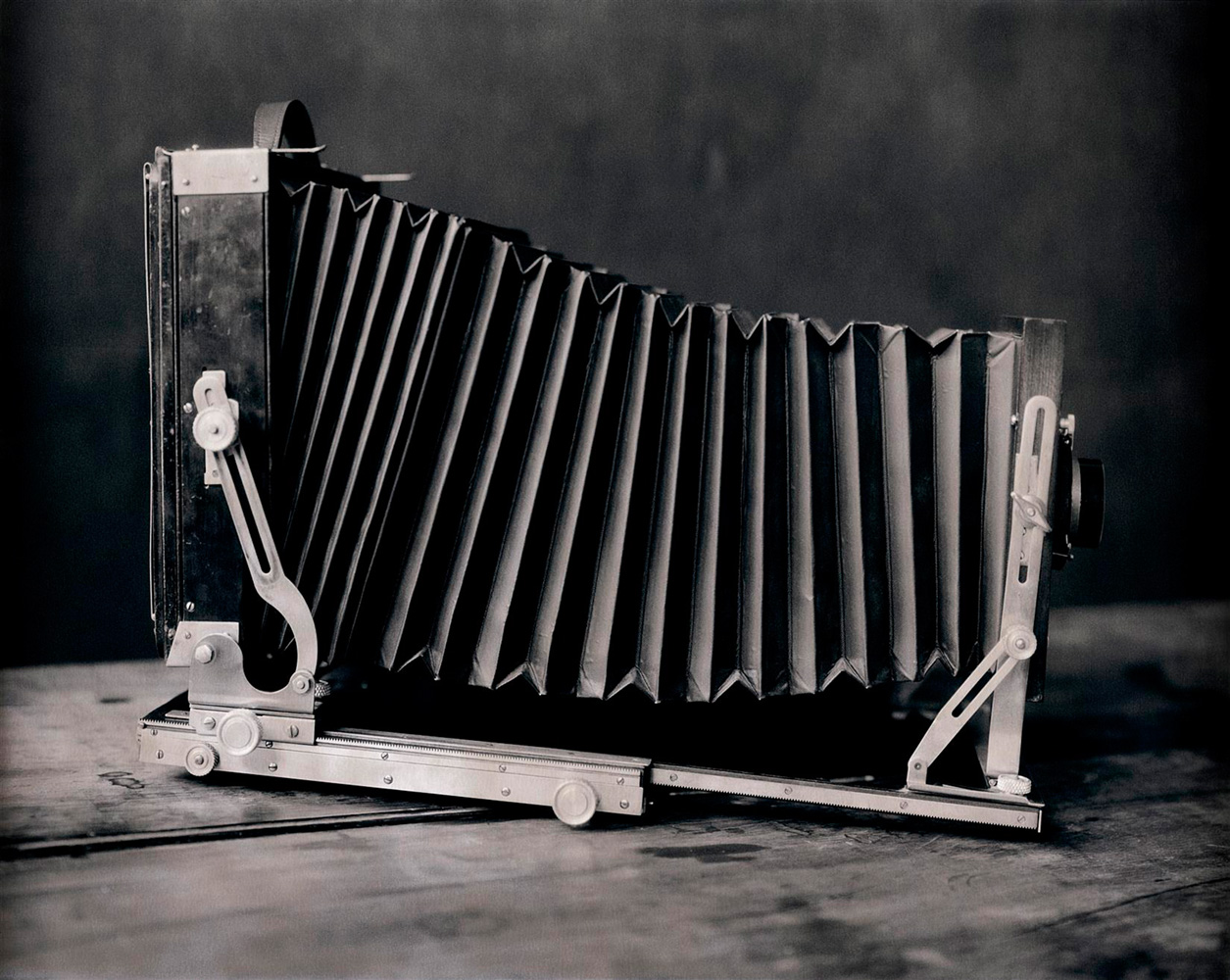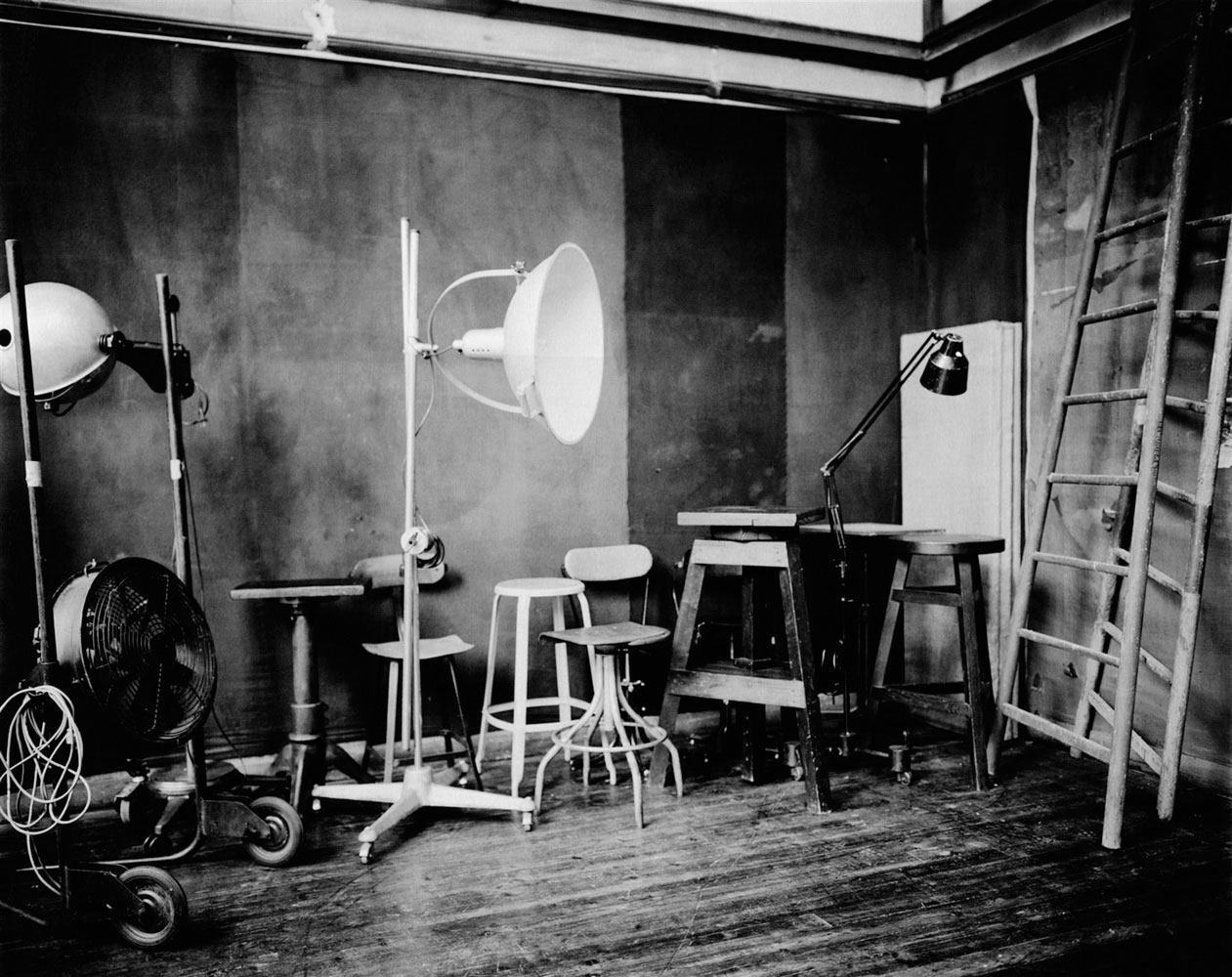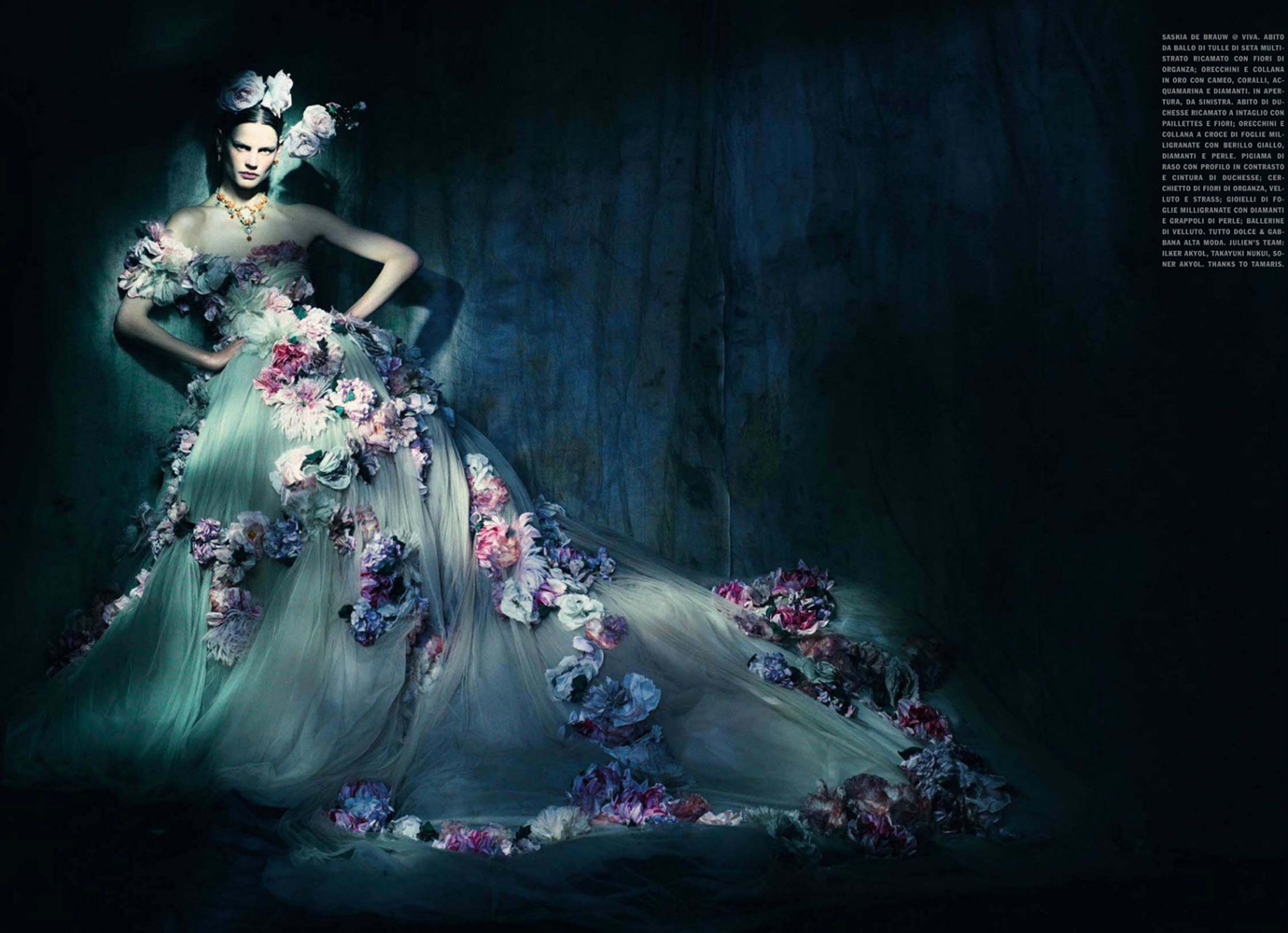Interview
PAOLO ROVERSI
By Susan Reich
Paolo Roversi is represented by Art + Commerce
“For me, light is life – and the first light that I see is the sun”, says Italian-born fashion photographer Paolo Roversi. “So when I think about light, I think about the sun and nothing else. Window light is the most important light for me. When I take a picture using window light, I always think about what a long trip the light is making to reach my subject.”
Speaking by phone from his home in Paris, Roversi pauses, perhaps reluctant to discuss the impulses behind his creations. His technique ‘ is not at all rational ’, he confides.
“My studio is a place for the chance, the dream, the imaginary to prevail. I give these forces as much space as I can.”
While he prefers “to be lost in the mystery of it all”, he recognizes that there is a single motive at work in his creations. “I am always in search of beauty. This I know for sure. Beauty is something that attracts me completely all of the time and pushes me far in search of something.”
In an industry that has glamorized grunge, misogyny and heroin chic, Roversi’s reverence for his female muses has remained a constant. His images have been described as “romantic”, “tender”, “ethereal”, “erotic” and “exquisitely beautiful”.
You never use strobe to illuminate your images. Why is that?
I like longer exposures because, in general, my photography is about portraits. I even consider my nudes to be portraits. The eyes are very important in every portrait. I can’t explain technically why the look of the subject is more deep, more touching, more human if the photographer uses a long exposure for the shot, but it is. I learned this from studying early photographs, when the photographers were obliged to use longer exposures. The portraits looked much deeper.
So what types of lighting sources do you use?
I work primarily with HMI lights, Mag-Lite flashlights and window light.
Do you have a favorite?
Window light. For me, it is the basis of everything. As Nadar said many years ago, at the beginning of photography, « Everyone can learn the technique of lighting. What is very difficult, and what you can’t teach is a feeling for the light, a sentiment of the light. »
Lighting is, above all, not a question of technique, but of the feeling. Because, even if you think it is a simple light, it depends on where you put the camera, where you put the subject, what you put behind the subject or beside the subject, the angle of the sun, if there is a cloud in front of the sun. Anybody can use a strobe, anybody can use any light – but to capture the sentiment of the light – that is not so easy.
Has your approach to lighting changed much over the course of your career ?
Yes. In the beginning, my lighting was very stiff, very different from today. I was taking a lot of care with the light. Maybe the relationship between the light and me was young, so I was a little bit scared of the light. But now the relationship is much cooler – we know each other much better and everything is much easier. In the beginning, like many young photographers, I think I wanted to show what I was able to do with the light. I was more narcissistic about it.
Now I am much more humble. I prefer to hide what my light is doing. Now I work more in a way that the subject is dictating the light.
How does this affect the lighting decisions that you make on a daily basis?
I try to be very fresh, very spontaneous and very free when I work. Sometimes, when I arrive at the studio in the morning, the lights are just sitting in a certain way – however my assistant left them – and I will just switch on these lights and take a picture without changing anything. Chance is very important to me.
How do you go about lighting an image ?
When I work in my studio, I always start with the main light. The main light for me is the sun, even if it is a tungsten source or an HMI. I always start with my sun. I set up one light – with its one angle, one shadow, one direction, one intensity, one quality.
Then, around this sun, I can start to maybe put reflections, to put other little lights here and there and there.
What is it like to light with the Mag-Lite ?
When I work with a flashlight, I work in total darkness. I have to think about how long I will keep the light on different parts of the subject. And I have to think about the direction that I am moving the light in, because the quality of the light is determined by how I move the flashlight with my hand.
It is like using a pencil in a way. A writer, or a painter or a composer of music is filling a white canvas. But, for me, photography is a black canvas. And on this black page, I use the Mag-Lite to write with the light.
People will sometimes refer to lighting done with Mag-Lite flashlights as « Roversi lighting. » How did you arrive at this technique?
Everything in photography is very old. Perhaps this « technique » had not yet been adapted for fashion photography because the model cannot move too much because of the very long exposure. It is not so simple, but it is easy for me because I work with Polaroid Film. I can see the result immediately. The most difficult thing is establishing the exposure time_ how long you keep the light on the subject. Sometimes it is difficult to judge, and with the Mag-Lite it is a matter of a second. So you have to move the flashlight very quickly. But I like this light because it is completely irregular. You never know what will happen.
Given the spontaneity you bring to your lighting, do you ever find yourself lacking a necessary piece of lighting equipment ?
I have enough lighting equipment to do many different things. I can always use another light. My lighting is not dependent on a particular source. There are many different possible ways to light a subject, and I choose one – the one that is coming from my heart, that is all.
Are you still working primarily with Polaroid Film ?
Most of the time, yes.
Are you shooting with large-format cameras exclusively ?
Much of the time I still work with 8×10 cameras. This is the reason that I work with one-second, two-second, three-second and sometimes 20-second or 30-second exposures. I never mind how long the exposure is – it is very rare that I shoot at exposures that are shorter than a quarter second.
But I am very free about the things that I use. I have no prejudice. I can use other cameras as well. It depends on what I want to do. Sometimes I change cameras three times before I find the right one. I’ll start with an 8×10 camera and two hours later I am shooting with my Leica or the Linhof.
I also work with the Rolleiflex for the 6×6 cm and the Alpa for the 6×9 cm. I like the little Polaroid SX-70s too and the Holga plastic cameras.
It’s very subjective – and sometimes very arbitrary. I change cameras for the same reason that I put more vinegar on my salad. You never want to eat the same dish every night !
But my old 8×10 camera, my Deardorff, of course that is my favorite. When I work with that, I feel at home.
Do you have a preference for hard or soft sources ?
I prefer soft, indirect light-diffused light.
Where did you learn about lighting ?
I don’t know if I’ve learned about lighting yet. I’m still learning, still discovering. That’s why I like photography.
I never went to school for photography. I learned lighting by working as an assistant. I learned by looking at the photographs of the masters of photography and the paintings of the great masters. You never invent : you simply take your influences from the giants before you.
Has anything influenced your lighting recently ?
When I came back from my last trip to India, I could not stop thinking about India in the moonlight. In my mind, I kept seeing all of these little candles in the temples – and dust everywhere. I was very attracted by this dust, because you see more of the light with the dust. India, for me, was one big shadow. Sometimes, I didn’t know what I was seeing in those shadows : a man, a god, a cow, a stone – and the mysteries that these shadows contained fascinated me.
So when I came back to my studio, I wanted to work with no light at all. I began a search for no light – it was as if I were searching for something deeper, because the light sometimes reveals too much.
Is there a particular quality that you’ve been consistently striving for in your lighting for different assignments over the years ?
When I look at my pictures from 20 years ago, even when the technique of the light is very different, I see a kind of unity, and this is surprising me a lot. Even in my book, Nudi, the photos look like they were taken in the same place, in the same light, on the same day. But they were taken over the course of 10 to 12 years, in New York, London, Paris. Sometimes they were done with window light, sometimes with HMI, but of course the design of the light was always the same. I think that in every image there’s a skeleton of the light, and the skeleton of my pictures is a little bit the same.
But I don’t think a certain light should become one’s style. I know some photographers who screw a light into the floor of their studio because they like it, and this becomes their style. I think this is terrible. It is too much like putting the same jacket on everyday because you want to be recognized and you are afraid that if you change jackets you won’t be recognized anymore.
Your personality is not coming from your jacket or the cut of your hair – and your photographic style should not be coming from a lighting technique. Your photographic style comes from your creative expression, from your esthetic, from the beauty that you can bring to the image, the emotion that you can give to the people who are looking at your work.





























































































Great Interview on one of the remaining old world masters! I was lucky enough to work with Paolo as an assistant way back in the day. Watching Paolo work was like
a year of education wrapped up in a single moment. We worked in positive negative 8×10 Polaroid for a Madonna album cover, He would produce one singe shot, process the 2
halves and have one final piece of finished art. Talk about a process ! Please keep up the great work of keeping the old world masters in the modern light Photographer Magazine!!
Tnx Chris
Thank you for this! He is such an inspiration. A true artist.
Roversi is a living legend! Thank you for the great interview! Thank you for talking about the process, technical choices and inspirations. I feel I could ask him the same questions if I met him 🙂 amazing…
All the credit goes to Susan Reich
Absolutely beautiful images.
Great interview, wonderful creative insights. Love the man’s work. Really made my day, Thank you Paolo thank you Susan.
Excellent inspiring interview with a great photographer whose style I admire so much. Thanks for sharing.
robert